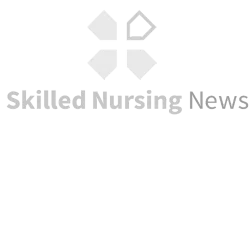PBJ research report and related news:

Study suggests staffing shortages during the pandemic strained nursing homes
Staffing shortages have been widely reported in US nursing homes during the COVID-19 pandemic, but traditional quantitative research analyses have found mixed evidence of staffing shortfalls.
In this study, qualitative and quantitative data from 40 US nursing homes were integrated to assess staffing levels during the pandemic. Short-term compensatory strategies were used by administrators to comply with minimum staffing regulations and offset staffing shortages.
Findings from this study suggest that staffing shortages during the COVID-19 pandemic placed strain on nursing homes.
Brazier, Joan F., et al. “Examination of Staffing Shortages at US Nursing Homes During the COVID-19 Pandemic.” JAMA Network Open, vol. 6, no. 7, American Medical Association, July 2023, p. e2325993. https://doi.org/10.1001/jamanetworkopen.2023.25993.

Report: Nursing homes’ reliance on agency staffing during pandemic resulted in hits to bottom lines
It’s no secret that nursing homes dealt with challenges in staffing from COVID-19. A study released last week in JAMA Network Open aimed to better understand how nursing home administrators thought about staffing during the pandemic, how they responded to the obstacles and how they fared.
No surprise here: Staff shortages during the pandemic strained operations.
The authors looked at 40 nursing homes in the United States to see how they were staffed during the pandemic. Joan F. Brazier, a researcher from Brown University’s School of Public Health in Providence, RI, led the research.
Fischer, Kristen. “Report: Nursing Homes’ Reliance on Agency Staffing During Pandemic Resulted in Hits to Bottom Lines.” McKnight’s Long-Term Care News, Aug. 2023, www.mcknights.com/news/clinical-news/report-nursing-homes-reliance-on-agency-staffing-during-pandemic-resulted-in-hits-to-bottom-lines.

Study suggests staffing shortages during the COVID-19 pandemic placed strain on nursing homes
In a recent study published in JAMA Network Open, researchers qualitatively examined staffing shortages in United States (US) nursing homes during the coronavirus disease 2019 (COVID-19) pandemic.
To steer through hard times when staffing was short, administrators increased staff workloads, decreased new recruitments, and offered wage raises to retain staff. Yet, even in 2022, only 2% of all US nursing homes worked fully staffed.
News-Medical.net. “Study Suggests Staffing Shortages During the COVID-19 Pandemic Placed Strain on Nursing Homes.” News-Medical.net, 2 Aug. 2023, www.news-medical.net/news/20230802/Study-suggests-staffing-shortages-during-the-COVID-19-pandemic-placed-strain-on-nursing-homes.aspx.

Study’s amazing discovery: COVID-19 was not very good for long-term care
Mama used to say the only good thing about being sick is that you’ll feel better later — if you live.
Long-term care operators might be forgiven for giving a similarly mixed review to the disease caused by SARS-CoV-2.
Fortunately, the most damaging wrecking ball to ever hit this sector appears to be moving on. And the facilities that survived the carnage are starting to feel a bit better.
But lest we forget how bad COVID-19 was, some clear if obvious documentation appears in a recent issue of JAMA Network Open. While the findings will probably not surprise anyone, they do point to how dire staffing challenges were during the storm.
O’Connor, John. “Study’s Amazing Discovery: COVID-19 Was Not Very Good for Long-term Care.” McKnight’s Long-Term Care News, Aug. 2023, www.mcknights.com/daily-editors-notes/studys-amazing-discovery-covid-19-was-not-very-good-for-long-term-care.

Policy Makers Called to Boost Funding, Rethink Staffing Regulations as SNF Administrators Cite High Costs of Pandemic
…The JAMA study recommending changes to staffing regulations used data from 156 interviews of administrators at 40 nursing homes across 8 health care markets that varied by region and nursing home use patterns.
Among the strategies used by administrators to comply with regulations and maintain good resident care, they cited increasing resident-to-staff ratios by hiring agency staff, and reducing resident census. However, even as these practices alleviated staffing issues during crisis mode, their overall impact was negative for resident care, revenue and worker wellbeing.
“Increased staff overtime pay, the high cost of agency staff, and the decreased revenue from new resident admissions has had major financial influences on nursing homes already coping with high operational costs due to the pandemic,” researchers noted.
Moreover, these practices – while useful at the time for skilled nursing facilities – tended to compromise resident care, especially as the trend of temporary staffing has continued past the pandemic.
Siddiqi, Zahida. “Policy Makers Called to Boost Funding, Rethink Staffing Regulations as SNF Administrators Cite High Costs of Pandemic.” Skilled Nursing News, Aug. 2023, skillednursingnews.com/2023/07/policy-makers-called-to-boost-funding-rethink-staffing-regulations-as-snf-administrators-cite-high-costs-of-pandemic.

COVID-19 Era Staffing Strains, Short-Term Compensatory Actions Shown to Negatively Impact Nursing Homes
Nursing home administrators have faced major staffing strain due to COVID-19, according to recent findings, leading to implementation of potentially harmful short-term compensatory actions for maintenance of their operations.1
This new data resulted from an analysis which examined the effects of pandemic-era changes to nursing homes’ administrators, given the apparent strain that COVID-19 regulations had on may of these facilities.2
The study’s investigators sought to address the mixed data resulting from prior quantitative studies on staffing shortfalls, and the research was authored by Joan F. Brazier, MS, from Brown University’s School of Public Health in Providence, Rhode Island.
Smith, Tim. “COVID-19 Era Staffing Strains, Short-Term Compensatory Actions Shown to Negatively Impact Nursing Homes.” HCP Live, 1 Aug. 2023, www.hcplive.com/view/covid-19-era-staffing-strains-short-term-compensatory-actions-shown-to-negatively-impact-nursing-homes.

Mary's Take: Examination of Staffing Shortages at US Nursing Homes During the COVID-19 Pandemic
Findings from this qualitative mixed-methods study may have implications for future research and policy. The dual approach of quantitative and qualitative analyses provides depth and context to our understanding of complex topics such as staffing and nursing home care. It remains unclear how long the crisis adaptation techniques nursing home administrators used can persist without major effects on staff and resident safety. More mixed-methods research is needed to better understand the long term outcomes of the COVID-19 pandemic associated with nursing home staffing and how policies and regulations around staffing during a crisis, such as a pandemic, have aided or limited the efficacy of administrator responses to maintain quality care for their residents. Policymakers should consider reviewing current nursing home regulations around staffing and work with nursing home administrators to create policies that more nimbly adjust to crisis management.
“Examination of Staffing Shortages at US Nursing Homes During the COVID-19 Pandemic.” BriggsNetNews, 28 July 2023, briggshealthcare.blog/2023/07/28/examination-of-staffing-shortages-at-us-nursing-homes-during-the-covid-19-pandemic.

Study suggests staffing shortages during the pandemic strained nursing homes
Staffing shortages have been widely reported in US nursing homes during the COVID-19 pandemic, but traditional quantitative research analyses have found mixed evidence of staffing shortfalls.
In this study, qualitative and quantitative data from 40 US nursing homes were integrated to assess staffing levels during the pandemic. Short-term compensatory strategies were used by administrators to comply with minimum staffing regulations and offset staffing shortages.
Findings from this study suggest that staffing shortages during the COVID-19 pandemic placed strain on nursing homes.
Brazier, Joan F., et al. “Examination of Staffing Shortages at US Nursing Homes During the COVID-19 Pandemic.” JAMA Network Open, vol. 6, no. 7, American Medical Association, July 2023, p. e2325993. https://doi.org/10.1001/jamanetworkopen.2023.25993.

Report: Nursing homes’ reliance on agency staffing during pandemic resulted in hits to bottom lines
It’s no secret that nursing homes dealt with challenges in staffing from COVID-19. A study released last week in JAMA Network Open aimed to better understand how nursing home administrators thought about staffing during the pandemic, how they responded to the obstacles and how they fared.
No surprise here: Staff shortages during the pandemic strained operations.
The authors looked at 40 nursing homes in the United States to see how they were staffed during the pandemic. Joan F. Brazier, a researcher from Brown University’s School of Public Health in Providence, RI, led the research.
Fischer, Kristen. “Report: Nursing Homes’ Reliance on Agency Staffing During Pandemic Resulted in Hits to Bottom Lines.” McKnight’s Long-Term Care News, Aug. 2023, www.mcknights.com/news/clinical-news/report-nursing-homes-reliance-on-agency-staffing-during-pandemic-resulted-in-hits-to-bottom-lines.

Study suggests staffing shortages during the COVID-19 pandemic placed strain on nursing homes
In a recent study published in JAMA Network Open, researchers qualitatively examined staffing shortages in United States (US) nursing homes during the coronavirus disease 2019 (COVID-19) pandemic.
To steer through hard times when staffing was short, administrators increased staff workloads, decreased new recruitments, and offered wage raises to retain staff. Yet, even in 2022, only 2% of all US nursing homes worked fully staffed.
News-Medical.net. “Study Suggests Staffing Shortages During the COVID-19 Pandemic Placed Strain on Nursing Homes.” News-Medical.net, 2 Aug. 2023, www.news-medical.net/news/20230802/Study-suggests-staffing-shortages-during-the-COVID-19-pandemic-placed-strain-on-nursing-homes.aspx.

Study’s amazing discovery: COVID-19 was not very good for long-term care
Mama used to say the only good thing about being sick is that you’ll feel better later — if you live.
Long-term care operators might be forgiven for giving a similarly mixed review to the disease caused by SARS-CoV-2.
Fortunately, the most damaging wrecking ball to ever hit this sector appears to be moving on. And the facilities that survived the carnage are starting to feel a bit better.
But lest we forget how bad COVID-19 was, some clear if obvious documentation appears in a recent issue of JAMA Network Open. While the findings will probably not surprise anyone, they do point to how dire staffing challenges were during the storm.
O’Connor, John. “Study’s Amazing Discovery: COVID-19 Was Not Very Good for Long-term Care.” McKnight’s Long-Term Care News, Aug. 2023, www.mcknights.com/daily-editors-notes/studys-amazing-discovery-covid-19-was-not-very-good-for-long-term-care.

Policy Makers Called to Boost Funding, Rethink Staffing Regulations as SNF Administrators Cite High Costs of Pandemic
…The JAMA study recommending changes to staffing regulations used data from 156 interviews of administrators at 40 nursing homes across 8 health care markets that varied by region and nursing home use patterns.
Among the strategies used by administrators to comply with regulations and maintain good resident care, they cited increasing resident-to-staff ratios by hiring agency staff, and reducing resident census. However, even as these practices alleviated staffing issues during crisis mode, their overall impact was negative for resident care, revenue and worker wellbeing.
“Increased staff overtime pay, the high cost of agency staff, and the decreased revenue from new resident admissions has had major financial influences on nursing homes already coping with high operational costs due to the pandemic,” researchers noted.
Moreover, these practices – while useful at the time for skilled nursing facilities – tended to compromise resident care, especially as the trend of temporary staffing has continued past the pandemic.
Siddiqi, Zahida. “Policy Makers Called to Boost Funding, Rethink Staffing Regulations as SNF Administrators Cite High Costs of Pandemic.” Skilled Nursing News, Aug. 2023, skillednursingnews.com/2023/07/policy-makers-called-to-boost-funding-rethink-staffing-regulations-as-snf-administrators-cite-high-costs-of-pandemic.

COVID-19 Era Staffing Strains, Short-Term Compensatory Actions Shown to Negatively Impact Nursing Homes
Nursing home administrators have faced major staffing strain due to COVID-19, according to recent findings, leading to implementation of potentially harmful short-term compensatory actions for maintenance of their operations.1
This new data resulted from an analysis which examined the effects of pandemic-era changes to nursing homes’ administrators, given the apparent strain that COVID-19 regulations had on may of these facilities.2
The study’s investigators sought to address the mixed data resulting from prior quantitative studies on staffing shortfalls, and the research was authored by Joan F. Brazier, MS, from Brown University’s School of Public Health in Providence, Rhode Island.
Smith, Tim. “COVID-19 Era Staffing Strains, Short-Term Compensatory Actions Shown to Negatively Impact Nursing Homes.” HCP Live, 1 Aug. 2023, www.hcplive.com/view/covid-19-era-staffing-strains-short-term-compensatory-actions-shown-to-negatively-impact-nursing-homes.

Mary's Take: Examination of Staffing Shortages at US Nursing Homes During the COVID-19 Pandemic
Findings from this qualitative mixed-methods study may have implications for future research and policy. The dual approach of quantitative and qualitative analyses provides depth and context to our understanding of complex topics such as staffing and nursing home care. It remains unclear how long the crisis adaptation techniques nursing home administrators used can persist without major effects on staff and resident safety. More mixed-methods research is needed to better understand the long term outcomes of the COVID-19 pandemic associated with nursing home staffing and how policies and regulations around staffing during a crisis, such as a pandemic, have aided or limited the efficacy of administrator responses to maintain quality care for their residents. Policymakers should consider reviewing current nursing home regulations around staffing and work with nursing home administrators to create policies that more nimbly adjust to crisis management.
“Examination of Staffing Shortages at US Nursing Homes During the COVID-19 Pandemic.” BriggsNetNews, 28 July 2023, briggshealthcare.blog/2023/07/28/examination-of-staffing-shortages-at-us-nursing-homes-during-the-covid-19-pandemic.


